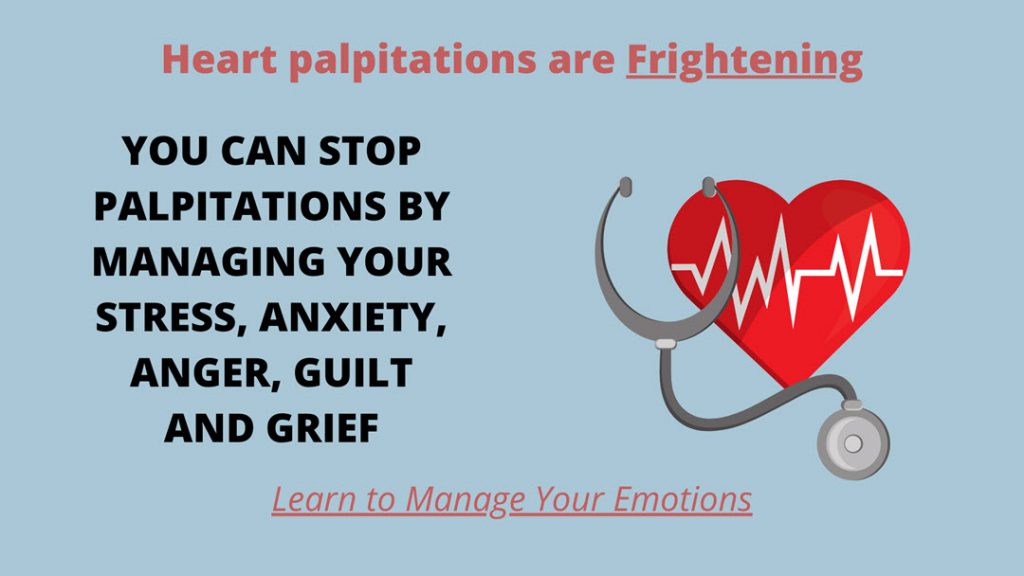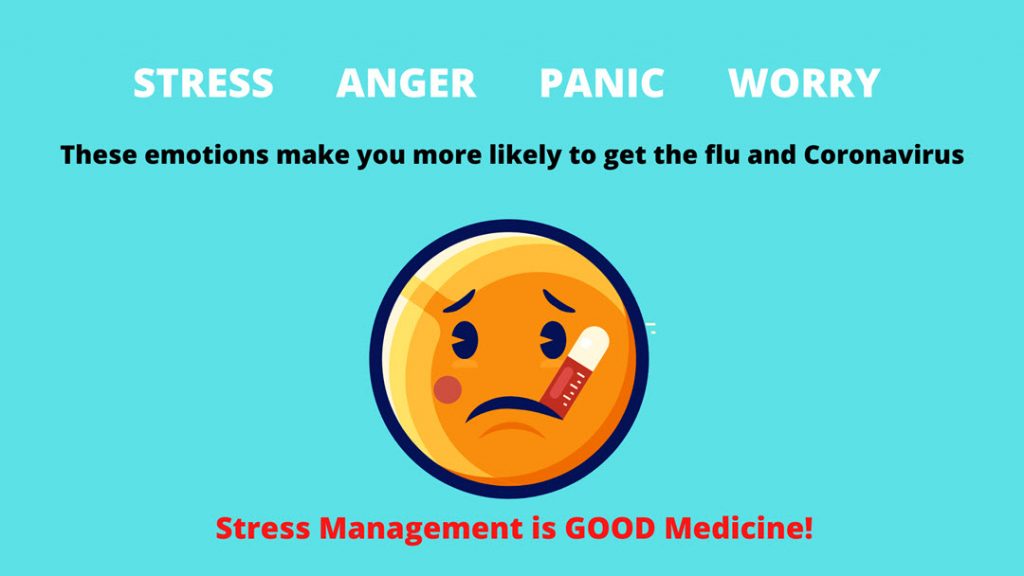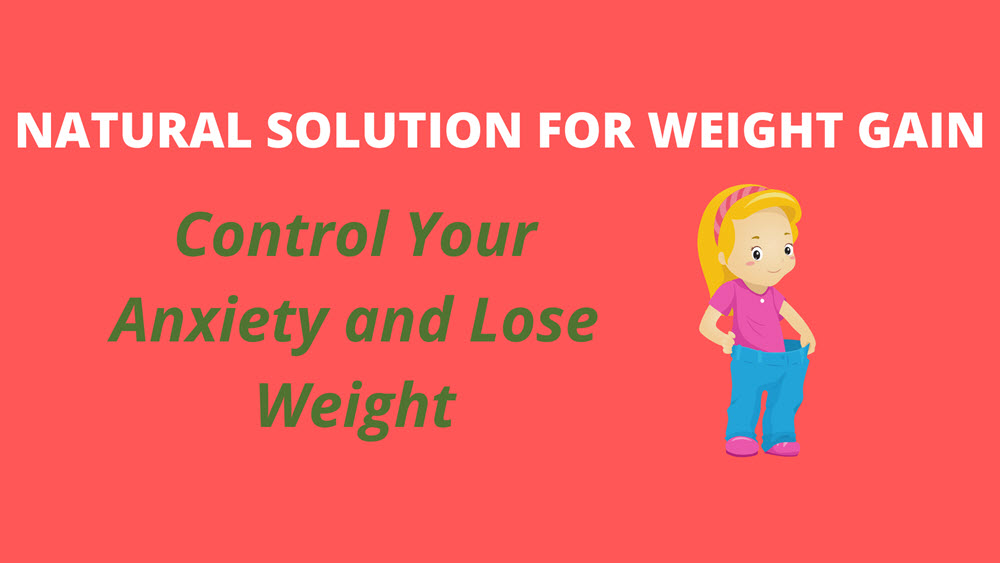Tollem Causem: Xenobiotics, Heavy Metals, and Vaccinations
Abstract
(A thesis submitted to the Faculty of the University of Bridgeport College of Naturopathic Medicine in partial fulfillment of the requirements for the degree of Doctor of Naturopathy and accepted this 30th day of April, 2004.)
Until the early 20th century major causes of morbidity and mortality were infectious influences such as pneumomnia, tuberculosis and small pox. As the industrial revolution progressed, improved living standards reduced the incidence of infectious influences. The environment, however, has become extremely hostile to living organisms. As a result, mortality and morbidity due to heart disease, cancer, diabetes, and multiple sclerosis have surpassed the infectious diseases of the past. In this review paper, these diseases of the 21st century are shown to be caused by xenobiotics, heavy metals, and vaccinations.
Chapter 1
Introduction
The fundamental philosophy of naturopathic medicine is Tollem Causum. That is, treat the cause in order to remove the obstacles to cure. Obstacles to cure are defined as “blocks to the self-healing capacity of the organism” (1). Once the obstacle to cure is removed, the body will naturally restore homeostasis. Dr. Henry Lindlahr stated it very simply, “All that the physician can do is to remove obstructions and establish conditions within and around the patient so that “the healer within” can do his work to the best advantage.” (2)
Early in the 20th century Lindlahr established a working model for natural medicine. He identified three primary requirements of the cell. To the extent that 1) innervation, 2) nutrition, and/or 3) drainage of the cell are impacted then disease will ensue. (2, 28) With respect to innervation, anything that “obstructs the nerve connection of the cell with the sympathetic nervous system and central nervous systems lowers the vitality of the cells, tissues and organs and of the organism as a whole, and interferes with the transmission of afferent and efferent nerve impulses.” (2,28) For nutrition of the cell it is necessary that there is “normal composition of blood, lymph, and other fluids of the body.” (2,28) Lastly, “accumulation of waste and morbid matter interfere with drainage” (2,28) of the cell thereby effecting its normal function. He goes on to list that “accumulations of waste material, morbid matter and poisons (pathogens) are caused by lowered vitality, faulty diet, over-eating, use of alcoholic and narcotic stimulants, drugs, vaccines, antitoxins, and by suppression of acute disease, by poisonous drugs, ice and surgical operations.” (2, 28 – 9). If Lindlahr were alive today he would most certainly add to his list of contributors to normal cell dysfunction xenobiotics, heavy metals, and vaccinations.
The main conflict between traditional and conventional (allopathic) medicine during the first half of the 20th century concerned how to treat infectious diseases. This is not surprising since the primary cause of death during this period was attributed to respiratory and infectious diseases. (3) According to Lindlahr “Modern medical science is built upon the germ theory of disease and treatment…it has been assumed that bacteria are the direct, primary causes of most diseases…human beings are at the mercy of these invaders…Basing their prophylaxis and treatment on this idea, the slogan is “kill the bacteria (by poisons antiseptics, serums antitoxins, etc) and you will cure the disease”. (2, 36) Lindlahr rebutted that “The proper thing to do, therefore, is not to try to kill the germs, but to remove the morbid matter and disease taints on which they subsist and which they are capable of reducing to suitable forms for elimination through the organs of depuration.” (2, 37) Despite his important contribution to the science of medicine, Lindlahr’s model was generally ignored in favor of the allopathic model along with the widespread usage of antibiotics and pharmaceuticals.
The allopathic model seemed to have great success and by 1950, respiratory and infectious disease fell below cancer as the cause of death. Yet at the same time death from cancer had increased quite dramatically, that is, the number of deaths had doubled. (3) Today, heart disease, cancer, stroke, and even diabetes mellitus have replaced influenza and pneumonia as the leading causes of death in the U.S. (4)
A recent article in the Herald Tribune alluded to some of the facts that point to environment influences as the leading cause of disease and death:
- More than 85,000 synthetic chemicals have been introduced in the past 50 years for industrial, farming and other uses, yet more than 90 percent of them have not been tested for their effects on human heath.
- Studies have linked 46 chemicals to mammary tumors in animals, according to the National Toxicology Program.
- Studies suggest that fewer than half of breast-cancer cases can be explained by known risk factors. American women have a one in eight chance of developing the disease, up from one in 22 in the 1940’s. (5)
This paper will review the past and current literature on the influence of xenobiotics, heavy metals, and vaccinations as the cause of chronic disease in the 21st century.
Chapter 2
Review of Literature
Xenobiotics
Studies have shown that residues of the pesticides and herbicides that are used in farming are in the food supply. In one study of seasonal vegetables, 100% of the samples were contaminated with organophosphates, organochlorines, synthetic pyrethroids and carbamates. (6) Pesticides used on summer crops will impact the winter food supply despite no usage of chemicals on the winter crops. This means that the soil becomes contaminated and provides a secondary source of pesticide residues. (7) Another study also indicated that contamination of the land with herbicides will impact the food for many years. In this study, food samples were taken from farms, fish and game where agent orange (dioxin) was sprayed 30 – 40 years prior to the sampling. Dioxin residues were found in the samples of food. (8)
In the U.S. it is estimated that the typical adult consumes 0.3, 5.5, and 1 μg/day of chlorpyrifos, malathion, and p.p’ – DDE, respectively. (9, 148) The acceptable daily exposure of these pesticides is 10, 20, and 20 μg/kg body weight/day. (9, 148 - 9) However, in this same study it was shown that 35% of the time there was a combination of these pesticides in the same sample. (9, 148)
Despite a ban on the usage of pesticides such as dichloro(diphenyl)trichloroethane (DDT) researchers are finding measurable blood plasma levels which are thought to be the result of residues in food from contaminated soil. (10) Also, it was found that detectable levels of pesticides were increasing despite the fact that the pesticides were no longer used in agriculture, indicating a persistency of the pesticide residues. (11)
As early as 1978 the U.S. Food and Drug Administration has been conducting annual studies of the U.S. food supply. The TDS (Total Diet Study) is designed to monitor the U.S. food supply for levels of toxic contaminants including pesticides. (12) According to an analysis of the TDS, “Average food ingestion exposures for the whole population exceeded benchmark concentrations for arsenic, chlordane, DDT, dieldrin, dioxins, and polychlorinated biphenyls, when nondetects were assumed to be equal to zero.” (13) In a study of 32 specific pesticides in two cities within the U.S., dietary exposure was greater than inhalation. (14)
The Center for Disease Control has conducted a series of surveys for purpose of assessing the exposure to chemicals by measuring the chemicals or their metabolites in human specimens such as blood or urine. The Second National Report on Human Exposure to Environmental Chemicals (SNRHEEC) presents exposure data for 116 environmental chemicals. Out of the 116 chemicals, 36 of them are pesticides, herbicides, or pest controls. Included in the organochlorine pesticides are two subcategories, hexachlorobenzene and pentachlorophenol, which were banned from use in the 1970’s and 1980’s. (15) The following table summarizes the results:
Category |
Total Number Assessed |
Number of Chemicals with Detectable Levels |
| Organophosphate pesticides: Dialkyl Phosphate Metabolites | 6 | 6 |
| Organophosphate pesticides: Dialkyl Phosphate Metabolites | 6 | 2 |
| Organochlorine pesticides | 11 | 8 |
| Carbamate pesticides | 6 | 3 |
| Herbicides | 4 | 1 |
| Pest repellents and disinfectants | 3 | 4 |
Of the 36 chemicals tested, 24 of these chemicals were at detectable levels.
Styrene-7,8-oxide is a base chemical for many products. It is used in cosmetics, perfumes, surface coatings, agricultural, biological chemicals, and the treatment of fibers and textiles. (16, 2) Based on studies with animals, styrene is “reasonably anticipated to be a human carcinogen” and is regulated by the U. S. Environmental Protection Agency as a hazardous substance. (16, 1 & 3)
In the food industry, styrene is a very common material used for containment of prepared and raw foods. Because of its toxicity, styrene migration from containers to foods has been well-studied. In one studied it was found that fat content and storage temperature played an important role in styrene migration. (17) However, that does not preclude the migration of styrene in alcohol and water, whether hot or cold. (17) Liquid foods have been shown to absorb styrene. (20) Absorption of styrene was shown to be proportional to the square root of the time of exposure. (21) Styrene migration is also found when foods are cooked in polyester cookware. (18) Plastic containers that are designed for usage in microwave ovens were tested and shown not only to release styrene but also compounds such as methylbenzene, ethylbenzene, 1-octene, and 1,4-dichlorobenzene. (19)
Exposure to styrene is both by food and inhalation. Particularly at risk to exposure are cigarette smokers. In one study intake of styrene from food was estimated to average 9 μg in the daily diet of people in the U.S. (22) In another study it is estimated that
daily styrene exposure from food and inhalation is 18.9 to 55.2 μg/person and annual exposure of 6.7 to 20.2 mg/person. (23)
Another chemical that has been widely studied is Bisphenol A. This chemical is used to manufacture polycarbonate plastic and epoxy resins for a variety of commercial applications. Polycarbonate plastic is used in water bottles and food containers where as epoxy resins are used as a thin coating on the interior surface of metal food and beverage cans. Composite resins containing Bisphenol A are also found in dental sealants and dental composites.
According to a report from the Bisphenol A Group Industry (“BAGI”), the U.S. FDA conducted a study that showed migration of Bisphenol A from polycarbonate water bottles into water that had been stored for 39 weeks. The amount found was 0.1 to 4.7 part per billion. (24, 4) Another report from BAGI stated that migration from can coatings was studied and showed Biphenol A was detected in food and beverages simulants. (25, 2 – 4) Bisphenol A is also detectable in the saliva of patients who have dental composites or sealants. (26, 2 – 3)
Phthalates are chemicals used in plastics, personal care products, solvents, and medical products. “As a result, phthalates may be ingested in medications and foods.” (27, 7) Soil and water contamination are also secondary sources of ingestion. (15, 81)
While several of the main studies concerning the migration of phthalates are reported in Japanese, a few studies in English have shown phthalate migration into food. In one study, factory workers using PVC gloves contaminated prepackaged foods. Cooked chicken in the packages were shown to contain the least amount of phthalates before cooking and the most phthalates after handling. (28) Phthalates were also found in baby food, infant formula, and diet food samples. (29) In another study, phthalates were shown to migrate from pie carton windows, plastic caps or lid seals, and aluminum foil-paper laminates. (30) There is a “good correlation between the plasticizers found in the printing ink from the film (i.e. plastic) and those in the food.” (31) All foods whether cooked or raw, containing fat or not, when packaged in whole or part by plastic, are potential sources of phthalates. (32)
In a cohort study of pregnant women in New York City and Krakow, Poland, it was determined that inhalation of phthalates was an important route of human exposure. (64)
All seven of the phthalates that were tested in the National survey were detectable according to the SNRHEEC. (15, 81)
Most fossil fuels are inefficient and produce by-products of combustion. The chemicals of incomplete combustion are called polycyclic aromatic hydrocarbons (“PAHs”). PAHs are pervasive in all industrial countries.
Incomplete combustion of wood and fuel for residential heating is the primary source of PAHs. Exhaust from gasoline and diesel motor vehicles, open fires, coal tar and pitch, creosote, industrial smoke and soot are just a few of the exhaustive number of sources of PAHs. (33, 3)
While air pollution is the primary route of PAHs exposure to humans it is interesting that inhalation is not the only source of PAHs. PAHs are detectable in smoked and charcoal-broiled foods, vegetable oils, cereals, flour, processed foods and beverages. (33, 4) Various PAHs have been measured in drinking water as well as fresh and sea water. (33, 4) Measurable levels of PAHs have been taken from soil. The contamination may be the result of intentional or unintentional deposition. (34, 235) Because water and soil is a deposition site for PAHs, both fish and aquatic plants have shown measurable amounts of PAHs. (34, 241) Cigarette and cigar smoke have been common sources of PAHs. (34, 271) Also, PAHs contamination in foods are the result of preservation and processing procedures. (35) Due to its fat content, breast milk has been found to be contaminated with PAHs. (36)
It is estimated that the daily exposure to PAH’s is: air, 0.207μg ; water, .027μg ; food, 1.6 – 16μg. (34, 273)
In the SNRHEEC, 14 metabolites of PAHs were screened. According to the study, 12 of the 14 PAH metabolites were detechtable in urine. (15, 49)
Heavy Metals
Heavy metals are naturally occurring, elemental substances of the earth. Metals such as mercury, cadmium, and arsenic are naturally released into the environment by wind, erosion, and volcanic activity. Anthropogenic exposure to these metals is the major source of toxicity in the industrialized nations. (37, 38, 39)
It is estimated that anthropogenic cadmium emissions is ten times the emissions from natural sources. Some anthropogenic sources include metal production, industrial applications, fertilizer production, waste incineration, and fossil fuel combustion. (38) For example, it was estimated that 55,433 pounds of cadmium was released into the environment by manufacturing facilities in 1996. (38, 247) Once airborne, cadmium gets deposited in soil and becomes a contaminant for the entire food chain. “Cadmium is taken up and retained by aquatic and terrestrial plants and is concentrated in the liver and kidney of animals that eat the plants.” (38) There is some evidence that cadmium concentrates in animals at the top of the food chain, like beef and poultry. (38, 254) According to the FDA Total Diet Study in 1986, all vegetables, all grain and cereal products, all meat, fish, poultry, all fruits contained cadmium. Exposure to humans, therefore, is not only by inhalation, but also by food and water. (38)
It is estimated that the typical American diet includes 0.23 mg/week of cadmium. (38, 264) Human accumulation of cadmium is not limited to the kidney and liver, but it is estimated that 70% of the cadmium concentrates in these organs.
Tobacco smokers expose themselves to approximately twice the daily intake of cadmium than nonsmokers. This exposure estimate is based on smoking one pack of cigarettes per day. (38, 264)
According to SNRHEEC, all age groups have measurable amounts of cadmium in blood and urine. (15, 13)
According to estimates 60,770 pounds of arsenic was released into the environment in 1997. (37, 246) Such anthropogenic sources of arsenic include, mining, pesticide, fossil fuel combustion, and garbage incineration. (37, 243) Water, soil and air are the major reservoirs of airborne arsenic. As a result, diet is the largest source of exposure. (37, 244)
The major sources of dietary arsenic are seafood, rice, mushrooms, and poultry. The average dietary exposure to arsenic is estimated to be as much as 20 μg/day.
Another major source of exposure to arsenic is drinking water. Various samples of public water supplies throughout the U.S. have shown 99% have arsenic contamination. Despite treatment of water supplies, tap water was shown to contain 2.4 μg/liter. (37, 263)
Smokers have greater daily intake of arsenic than nonsmokers. Each cigarette averages 1.5 μg of arsenic. (37, 274)
It is estimated that the daily intake is as follows: water, 0.1 – 11.0 μg; air, 0.0003 – 0.6 μg; food, 0.02 – 0.6 μg. (37, 276)
Studies of levels of arsenic in human tissue and urine have shown detectable levels including hair, fingernails, breast milk, liver, lung, spleen. (37, 280 – 81)
Mercury is found in the environment in three valance states and three forms: 1) elemental (metallic), 2) inorganic complexes, and 3) organic complexes. (39, 379) While naturally occurring in nature, mercury is mainly distributed throughout the environment by anthropogenic processes: mining and smelting, industrial processes, combustion of fossil fuels, production of cement, and commercial/municipal incineration. (39, 379)
Due to anthropogenic processes it is estimated that current mercury levels in the air are 3 to 6 times higher than the preindustrial era. (39, 386) It is estimated that 2,000 to 4,500 tons of mercury is released into the atmosphere each year mainly from mining, smelting, and other anthropogenic processes. (39, 389)
Mercury has been measured in ground water and surface water in and around 714 hazardous waste sites throughout the U.S. (39, 395) Effluents from municipal waste treatment facilities containing mercury have been measured in sediment of major rivers. (39, 395)
Soil contamination by mercury in the atmosphere is minimal compared to the various applications of fertilizers that contain mercury (including recycled sewage sludge). (39, 396)
The aquatic food chain is a source of human exposure to mercury. Plants, fish, and other water creatures easily absorb the organic form, methylmercury. (39, 401) It has been shown that accumulation of methylmercury is magnified in higher levels of the food chain. (39, 401) Bioconcentration of methylmercury is not limited to freshwater species, but is found throughout salt water species as well. (39, 402)
The indoor environment was found to be a source of mercury contamination due to latex paint. (39, 410)
In the U.S.D.A. Total Diet Study conducted in 1982 – 1984, 129 of the 234 food items contained detectable amounts of mercury. Seafood was the major food source. (39, 417) In one study of selected species of fresh water fish from the northeastern state, tissue samples exceeded the FDA action level. (39, 423) Studies have shown detectable mercury levels in the muscle, liver, kidney tissue of marine mammals such as whales, seals, and walruses. (39, 425)
Indirectly, fish meal used as food for poultry and cattle was found to contain mercury. (39, 417) A study of raw foods like grain, vegetable, and fruits were shown to contain detectable amounts of mercury. (39, 417)
There are various consumer and medicinal products that contain mercury such as skin creams, herbal remedies, laxatives, tattooing dyes, finger paints, artists paint, and make-up paints. (39, 428)
While food, air, and consumer products are primary sources of mercury, “recent animal and human studies, however, have also shown that the uptake, distribution, and rate of excretion of elemental mercury from dental amalgams are also major contributing factors to mercury body burden in humans.” (39, 431) The estimated daily average intake of mercury is: elemental, 3.9 – 21 μg; inorganic, 4.3 μg; organic 2.9 μg. (39, 432) Depending on the number of dental amalgams that a person has, his average daily exposure may be as high as 28 μg (potentially 1g per year).
According to SNRHEEC there were detectable levels of mercury in all samples of urine and blood for all ages. (15) Multiple studies have shown mercury in human breast milk. (39, 444)
Vaccinations
As early as the fifth century B.C.E. there were medical records showing the use of infectious materials to prevent or reduce disease. (40, 8) In 1672, smallpox exudates was applied to an intention cut made in the patient’s skin. (40, 10) In 1778, Edward Jenner combined cowpox from bovine sources and “horse-grease” from infected horse hoofs to make a vaccine. In 1806, Robert Willan published a study on the cowpox vaccination as a prophylactic against smallpox. (40, 11) Such is the beginning of the modern era of vaccinations.
Despite its theoretical promise of immunity from disease, it was recognized as early as the 1800s that vaccinations were not always effective at preventing infection. (40, 19) The concept of “herd immunity” was born from the experience that percentages of populations in excess of 90% showed resistance to polio, measles, and pertussis. Compulsory immunization laws were enacted in the United States throughout the 20th century. As of 1995, all fifty states required the diphtheria, rubella, measles, and polio vaccines. (40, 147)
Chapter 3
Discussion
In the Second National Report on Human Exposure to Environmental Chemicals the Center for Disease Control and Prevention (“CDC”) states “The measurement of an environmental chemical in a person’s blood or urine does not by itself mean that the chemical causes disease. Advances in analytical methods allow us to measure low levels of environmental chemicals in people, but separate studies of varying exposure and health effects are needed to determine which blood or urine levels result in disease.” Despite publishing the big picture on human exposure, the CDC has failed to correctly analyze the results of this study. The fact is, the majority of the U.S. population has a combination of various detectable levels of the 116 chemicals that were tested. The human body has become a soup of toxic chemicals. In the 1982 National Human Adipose Tissue Survey, the Environmental Protection Agency reported 11 out of the 17 target volatile organic compounds were detected in greater than 50% of the sample. The toxic chemicals styrene, DDT, xylene and ethylphenol were detected in 100% of the tissue samples. Five other chemicals including benzene and toluene were found in 96% of the samples. (41, 5) This Adipose Tissue Survey also points to the fact that many of the chemicals tested in the CDC survey are not found in the blood and urine, but rather, in intracellular and intercellular compartments.
Dr. William Rea at the Environmental Health Center in Dallas, Texas has developed five principles that should be considered when analyzing the environmental effects on the process of disease. He states:
- “Medical technology lags about 100 years behind environmental technology, and this hampers us in diagnosing and treating diseases caused by noninfectious processes;
- Total body load refers to the sum of all the incitants that the body has to handle in order to function; it is the total of the pollutants in air, water and food;
- An individual comes into contact with a potentially harmful substance but sustains no apparent harm because there is no immediate reaction. This occurs if he is exposed daily or more frequently. However, should he then avoid the substance for four days he becomes unmasked. If he now takes the suspect substance into his body, there will be an immediate and clearly definable reaction if the substance is, in fact, harmful to him;
- Often an individual is initially stimulated and feels the substance is not harming him but actually doing him good. However, after a period of time, be it minutes, months, or years, his body’s defenses break down and he develops disabling withdrawal symptoms;
- Each individual possesses a finite number of enzymes quantitatively different from the next. One person may have a superabundance while the next may have too few to fight off pollution.” (42, 1 – 3)
In one study, 12 cardiac patients were exposed and tested against air, water, and food pollution once they reached a symptom-free status. A great effort was taken to eliminate and control all chemical toxins from the environment during the testing procedure. In 10 of the 12 patients, cardiac arrhythmias were reproduced along with other signs and symptoms of cardiac disease. Blood abnormalities were detected in the complement and t-lymphocytes. Commercially prepared foods were tested. Each patient was challenged with common materials that are found in the home and work environments. (43) This study demonstrated that hydrocarbons, pesticides, and herbicides in food, water and air caused inflammation.
Ten patients with nonspecific vasculitis were studied to determine environmental triggers of the disease. The test environment was free from inhaled and ingested contaminations and each patient was cleared of signs and symptoms before testing. Each of the ten patients had vasculitis reproduced with various combinations of inhalants and foods. Of note was that these patients had different susceptibilities to different combinations. After ingestion or inhalation substances were removed, the patients returned to an asymptomatic state. (44)
Ten patients with recurrent nontraumatic thrombophlebitis and pulmonary embolism were tested against common foods and odors. Each patient was asymptomatic before testing because of the environmentally controlled environment. Depending on the patient’s susceptibility to the various inhalants, significant changes in pulse rates were recorded. (45) Increases in pulse rates demonstrated that certain chemicals were stressors in some patients and not others (and visa versa).
There is a correlation between pesticides and brain functioning. In a study of forty patients, it was shown that a decrease in blood pesticides inversely affected the performance on psychological tests for brain function. (46)
In a study of 23 patients it was shown that chlorinated pesticides and chemical solvents inhibited or stimulated the autonomic nervous system. Sympathetic fibers were inhibited while parasympathetic fibers were stimulated. The researchers concluded that there was a relationship to autonomic nerve function and total body load. (47)
After fasting for four days in a “sterile environment” a patient with vasculitis and immune deficiency (based on T-lymphocyte count) had his symptoms reversed. The patient had an acute exacerbation of his signs and symptoms when he was exposed to chlorine, formaldehyde, phenol, and natural gas. A second patient with signs and symptoms of cystitis was cleared after 5 days in an environmental control unit. Symptoms were reproduced after exposure to chlorine, phenol, and natural gas. (48)
Twelve patients with exposures to pesticides, solvents, plastics, and hydrocarbons were studied. Such exposures resulted in inflammatory diseases such as colitis, arthritis, bronchitits, sinusitis, asthma, and vascular headaches. Although each patient was subjected in their work environment to only one of the aforementioned toxins, it was found that these patients became intolerant to many other substances at relatively low levels. The signs and symptoms were relieved after a period in a clean environment, but low doses of the test substances reproduced the symptoms. (49)
In a study of 134 patients who were diagnosed with multiple chemical sensitivities, 114 of the patients had detectable blood levels of PAHs. On average three PAHs were detected in each patient. (69)
In a study of workers involved in the manufacturing of polyvinyl chloride it was found that long term exposure to a vinyl chloride monomer lead to increasing concentrations in the patients. The researchers concluded that angiocarcinoma of the liver was associated with this toxicity. More importantly, the researchers also concluded that this toxicity was responsible for other vascular tumors. (50)
Ninety patients with chronic fatigue syndrome, fibromyalgia, and multiple chemical sensitivities were study for correlations between the syndromes. The researchers were unable to distinguish either demographic or clinical factors among the patients. (51) Similarly, Gulf War veterans correlated chronic fatigue syndrome with multiple chemical sensitivities in 15.7% and 13.1%, respectively, of the patients who are members of the Gulf War Registry. (52)
A 4 year old child with failure to thrive was associated with a milk allergy during infancy. The disease progressed to asthma, allergic symptoms, sinusitis, headaches, fatigue, and rashes that were associated with exposure to chemicals, foods, and allergens. The child was given a diagnosis of multiple chemical sensitivities. (56) Despite normal bloodwork including peripheral eosinophil count and serum IgE, the patient demonstrated significant inflammatory responses to xenobiotic exposure.
Pesticides and herbicides have many affects on the immune system:
1) Mercury containing insectides have direct cytoxic effects on cells; 2)Dysregulate complement by forming IgG and complement complexes; 3) Suppression of suppressor T-cells; 4) Alteration of phagocytic activity of neutrophils: 5) Deregulate basophils preventing histamine release and anaphylaxis; 6) Suppress skin whealing capacity for immediate antigen reactions; 7) Alter receptor sites for hormones; 8) Alter and damage sodium pump. (53) In a study of 200 multiple chemical sensitivity patients, symptoms were reproduced simply by chemical inhalation. Patients had depressed T and B cells and also showed symptoms of depression, impaired memory, impaired concentration, lack of energy. Brain function improved when pesticide levels were decreased. (53) Similarly, 60 patients with hypertension, porphyria, vasculitis and multiple sclerosis were studied. It was noted that there was greater frequency of immune abnormalities with patients whose disease process associated with pesticides had progressed. (53)
The relationship between maternal pesticide ingestion and infant immunity was studied in 47 infants. The researchers implicated pesticides in the alteration of the production of TNF – α . The researchers found that suppression of this cytokine would lead to autoimmune diseases and increased susceptibility to infections. (54)
Farm workers with chronic exposure to pesticides had measurable deficits in cognitive and psychomotor function. These deficits were noted despite a history of pesticide poisoning. (55)
Chronic exposure to pesticides were shown to inhibit the mitochondrial complex I. The researchers concluded that chronic exposure to pesticides can produce Parkinson’s disease. (61)
Insectidides have been shown to shown to cause neurobehavior diseases in adults as a result of in utero exposure. In one study it was shown that the organophosphate insecticide chlorpyrifos elicits long-lasting changes in serotonin recepetors during embryonic development. (66) In a related study, the researchers observed that in utero exposure to chlorpyrifos effected “cell signaling cascades that are vital to cardiac and hepatic homeostasis.” They concluded that such effect had “potential implications for cardiovascular and metabolic disorders that may emerge long after the end of the pesticide exposure.” (68)
In one study, styrene was shown to have high estrogenic activities in the MCF-7 human breast cell as well as competively binding to the human estrogen receptor. (57) Also, metabolites of styrene were shown to demonstrate estrogenic activity. (58)
The plastic monomer bisphenol A which was found as a food contaminant in lacquer coated cans was shown to have estrogenic activity on human MCF-7 cells. (59) Unpolymerized and degraded forms of bisphenol A were shown to have estrogenic activity. (60)
In one study it was found that polychlorinated biphenyls (“PCBs”) antagonize the steroid and xenobiotic receptor. The researchers concluded that exposure to PCBs may “inhibit the detoxification of steroids, bioactive dietary compounds, and xenobiotics.” (67)
187 women from Manhattan who were pregnant at the time of the World Trade Center collapse were studied. It had been reported that multiple toxic chemicals were released into the atmosphere. It was found that 8.2% of the babies were in the 10th percentile for birth weight as compared to 3.8% of the control group. The researchers believe the difference may be due to in utero exposure to PAHs. (62) Phthalate exposure in utero has been shown to shorten the duration of pregnancy. (65)
In one study the sperm of 168 patients was studied in relationship to phthalate exposure. The researchers stated that in relation to phthalate toxicity “a constant steady state may be reached because of chronic and repetitive, low-level exposures from dietary ingestion and from many commonly used products. The researchers concluded that phthalates are associated with DNA damage to sperm. (63)
There is a great deal of information concerning the toxicity and systemic effects of heavy metals. A complete disclosure of toxicity is well beyond the scope of this paper. The following is an overview of three pervasive metals which are found in air, food, and water.
Mercury is probably the most damaging heavy metal. Mercury has been shown to effect the following systems: 1) respiratory, 2) cardiovascular, 3) gastrointestinal, 4) hematological, 5) musculoskeletal, 6) hepatic, 7) renal, 8) dermal, and 9) immunological. The developmental toxicity in fetus’ associated with oral exposure is very well-documented. The effect is mainly neurological and may range from delays in motor and verbal development to severe brain damage. (39, 220 – 301) Mercury has been shown to inhibit the growth of nerve fibers. (79) Researchers found that mercury arrests cell growth by disrupting nerve cell microtubules, an important organelle for nerve cell structure. (80)
There may be a relationship between depression and mercury toxicity. Mercury has been shown to disrupt neurotransmitter metabolism. In one study with rats, mercury inhibited the activity of monoamine oxidase in various brain tissues. (81) The inhibition of MAO activity may upregulate cell production of MAO necessitating synthetic MAO inhibitors (i.e., pharmaceuticals) to reduce symptoms of depression.
Many animal studies concerning the relationship of low-dose exposure to inorganic mercury and autoimmune diseases have shown that inorganic mercury “accelerates and exacerbates” the disease process. In order to make this correlation to humans, a group of researchers grafted lupus-like tissue to otherwise healthy mice. Prior to grafting these mice were exposed to low levels of inorganic mercury. It was found that the mercury significantly worsened the disease and resulted in premature mortality. The researchers concluded that “these results are consistent with the hypothesis that low-level, nontoxic inorganic mercury preexposure may interact with other risk factors, genetic or acquired, to promote subsequent autoimmune disease development.” The researchers proposed that the mechanism of mercury may not induce autoimmune disease but may “lower the threshold” for when an infectious or toxic agent in encountered. (70)
Researchers of an in vitro human study of the autoimmune disease rheumatitis found that heavy metals, including mercury, decreased DNA content in the cell culture with corresponding inhibition of collagen production. (75)
Mercury is very toxic to the immunologic system. Researchers found that the important cell of phagocytosis and antigen presentation was inhibited by apoptosis. It is believed that mercury increases cellular oxidation by potentiating reactive oxygen species. (76) Similarly, mercury was shown to cause T-cell apoptosis an important cell for viral immunological reactions. (77) Mercury induced T-cell death by inhibiting the function of the cell mitochondria thereby shutting down the source of energy for metabolism. (78)
Chronic inhalation or oral exposure to cadmium affects mainly the kidney. Cadmium that is not metabolized initially damages the renal tubules. Cadmium in or itself has not been shown to be the cause of kidney failure, however, diseases that are a result of renal dysfunction have been studied. Cadmium effects vitamin D metabolism which has been shown to decrease bone density leading to osteomalacia. Cadmium exposure has also been shown to increase blood pressure having an affect on the cardiovascular system. Because of cadmium’s affect on the kidneys and vitamin D, the corollary effect on calcium metabolism has been shown. Cadmium has been shown to induce anemia because in competes with iron absorption in the gastrointestinal tract. A few studies have shown neurological and neuropsychological effects of cadmium. The information regarding other systems is very limited yet there are many animal studies showing the effects of cadmium on the gastrointestinal, cardiovascular, gastrointestinal, and reproductive systems. (38, 165 – 188)
Chronic oral exposure to arsenic has been shown to seriously damage the cardiovascular system. Blackfoot disease and Raynaud’s disease are various manifestations of arsenic toxicity. The risk of death from cardiovascular disease is increased with chronic arsenic exposure. Exposure has been shown to contribute to arrhythmias and other changes in the electrocardiogram. Symptoms like nausea, vomiting and diarrhea due to irritation of the gastrointestinal mucosa from chronic arsenic exposure. Oral exposure of arsenic has been shown to cause anemia, hemolysis and leukopenia. Chronic exposure to arsenic also cause hepatic swelling and tenderness. The triad of hyperkeratinization of the skin, wart formation and hyperpigmentation with spots of hypopigmentation has been linked to arsenic exposure. Peripheral and central neuropathy is common with arsenic exposure. Chronic exposure to arsenic has been shown to affect the developing fetus. Congenital malformations, low birth weight, and spontaneous abortion are observed “particularly where the populations were exposed to a number of other chemicals.” (37, 174) Studies show that exposure to arsenic increase the risk of cancer, including lung, skin, liver, bladder and kidney. (37, 164 – 190) In one study researchers associated chronic arsenic exposure with squamous cell carcinoma, basal cell carcinoma, Bowen disease, hepatocellular carcinoma, and angiosarcoma of the liver. (71)
In one study of low dose exposure to arsenic it was shown that arsenic complexed with glucocorticoid receptors which caused altered nuclear function. The researchers concluded that “arsenic may represent a new class of endocrine disruptors that may act by altering downstream receptor function rather than by direct competition of hormone binding.” The result is inhibition of the mechanism that suppresses tumor growth. (72)
Researchers found an inverse relationship between serum arsenic levels and antioxidants. The researchers concluded that “persistent oxidative stress in peripheral blood may be a mechanism underlying the carcinogenesis and atherosclerosis induced by long-term arsenic exposure. (73)
The relationship of hypertension to arsenic exposure was studied in vitro with human aortic endothelial cells. It was shown that arsenic inhibited endothelial nitric oxide synthase thereby decreasing nitric oxide relaxation of arterial cells. The researchers concluded that “an impairment of vasomotor tone due to arsenic exposure may be a contributing factor in the development of cardiovascular disease.” (74)
According to the Centers of Disease Control vaccines have been an “amazing success story.” They explain that:
“Up through the early 1920's, diphtheria killed over 10,000 people every year. Since vaccinating children against diphtheria in the 1930's and 40's, it is rare for a doctor even to see a case of diphtheria, much less have a child die from it. In 1962, the year before measles vaccine was introduced almost 500,000 cases of measles were reported in the U.S. Ten years after we started vaccinating there were about 32,000 cases, and ten years after that there were fewer than 2,000. In 1998 and 1999, only about 100 measles cases were reported each year. Until the middle of the 20th Century, smallpox was one of the most devastating diseases the world has ever known. Millions died from it every year. In 1967, the World Health Organization declared war on smallpox with an intensive, worldwide vaccination campaign. Twelve years later, smallpox was wiped out. gone from the Earth forever. Parents in the 1950's were terrified as polio paralyzed children by the thousands. Then, using the Salk and Sabin vaccines the fight against polio is nearly won, and soon it will join smallpox as nothing but a bad memory.” (82)
The CDC recommends 25 or more vaccines before the age of four. (83) However, the war against infectious disease may have nothing to do with vaccinations but rather improvements in standards of living which include better sanitation and waste disposal, cleaner water, fresher foods, and migration from crowded living environments. (40) The argument for or against vaccinations based on its efficacy may be difficult to reconcile because of poor statistics, but research is showing that there are short and long term effects of vaccinations other than control of infectious diseases. Vaccinations are shown to cause cancer, autoimmune and immune dysregulation diseases, neurological disorders, allergies, and respiratory diseases.
The link between the polio vaccination and cancer is an ongoing investigation that may be more of a detective story. Researchers have found a simian (i.e., monkey) virus is the cause of brain and bone cancers. (84) Yet researchers do not know the route of exposure to the virus. (85) Nevertheless, it has been reported that the U.S. Food and Drug Administration found that the polio vaccine had been contaminated with foreign DNA and African green monkeys were imported for the production of the polio vaccine. (86)
The autoimmune disease, Guillain Barre Syndrome, was found to be caused by the influenza vaccination. The researchers hypothesized that the development of the autoimmune disease was the result of either molecular mimicry or nonspecific activation of the immune system. More importantly, chicken protein from the preparation medium was implicated in the immune response. (87)
In one study on childhood allergies and allergic reaction, the researchers found evidence that pertussis and diphtheria/tentanus antigens elicit IgE antibody formation. (88) Similarly, a cohort study found that hay fever was less common in children who contracted the measles infection than those who had been immunized with the measles vaccination. (89)
Autism has been linked to a number of vaccines. In one study of measles, mumps, rubella it was found that antibodies to these viruses caused an autoimmune reaction to brain tissue as seen in autism. (90)
In a study of veterans with Gulf War Syndrome, the researchers discovered viral transmutation in the patients’ genetic material similar to the residues found in the oral polio vaccine. (91) (92) This discovery has enormous implications for many diseases, the causality of which has yet to be linked to vaccines.
Chapter 4
Summary and Conclusion
This paper has considered various types of toxic xenobiotics and heavy metals, their route of exposure to humans and surveys of detectable levels in urine, blood and fat. It is impossible to avoid exposure to any of these influences because they are commonly found in air, food, and water as though they were all found in nature. Industrialization has substantially increased the environmental load of heavy metals to the point that children in the most remote areas of the world are born with defects due to in utero toxicity. Vaccinations were included with these environmental influence because by their very nature they are introduced into the body and are not naturally occurring. Vaccinations are only being studied for the short term effects, yet there is some very good evidence of long term causality with cancer, autoimmunity, and genetic mutation.
In the case of xenobiotics, the chemicals are generally fat soluble. In a very interesting study, the levels of organochlorine concentrations of athletes were compared with obese individuals. The researchers concluded that “Large adipose tissue compartment such as observed in obese individuals is associated with increased levels of circulating organochlorines, whereas leaner sedentary and trained persons have a lower plasma concentration of these compounds.” (94) It can be hypothesized that the body, in its infinite wisdom to protect itself, is sequestering toxic chemicals into adipose tissue. This mechanism may explain the tendency of Americans toward carbohydrate loading in their diet in order to build adipose tissue. Unfortunately, the result has lead to obesity, diabetes, and cardiovascular disease. (93) Or, it is only a matter of time before the total body load is so great that circulating xenobiotics overload the system causing multiple chemical sensitivity syndrome. Finally, the influence of so many different xenobiotics circulating in the lymphatics may ultimately cause cancer. In a recent study of cadavers and surgical patients, the researchers showed a very high correlation of pesticides and non-Hodgkin’s lymphoma. (95)
Under the Naturopathic model of medicine, removing the obstacle to cure requires physicians to treat their patients primarily for detoxification of xenobiotics and heavy metals, and advise patients against the use of vaccinations.
References
- Bennett P, Placebo and the Art of Medicine. In: Murray MT, Pizzorno JE, editors. The Textbook of Natural Medicine. 2nd ed. London:Harcourt Publishers Limited; 1999. p. 60.
- Lindlahr H, Philosophy of Natural Therapeutics, Kent (England): The Maidstone Osteopathic Clinic; 1975. p.24.
- http://www.healthsentinel.com/vaccines/diseaseandrelateddata_files/sheet002.htm
- www.cdc.gov/nchs/data/hus/hus02cht.pdf Chartbook on Trends in the Health of Americans; 2003 p. 144.
- Roan S. Policing Pollution. Sarasota Herald-Tribune 2003 December 8; Sec E:1 (col.1)
- Kumari B, Madan VK, Kumar R, Kathpal TS. Monitoring of seasonal vegetables for pesticide residues. Environ Monit Assess 2002 Mar; 74 (3): 263-70.
- Kumari B, Madan VK, Kumar R, Kathpal TS. Magnitude of pesticidal contamination in winter vegetables from Hisar, Haryana. Environ Monit Assess 2003 Sep; 87 (3): 311 – 8.
- Schecter a, Quynh HT, Pavuk M, Papke O, Malisch R, Constable JD. Food as a source of dioxin exposure in the residents of Bien Hoa City, Vietnam. J Occup Environ Med. 2003 Aug; 45(8): 781 – 8.
- MacIntosh D, Kabiru C, Ryan PB. Longitudinal Investigation of Dietary Exposure to Selected Pesticides. Environ Health Per 2001 Feb; 109 (2): 145 – 150.
- Heudorf U, Angerer J, Drexler H. Current internal exposure to pesticides in children and adolescents in Germany: blood plasma levels of pentachlorophenol (PCP), lindane (gamma-HCH), and dichloro(diphenyl)ethylene (DDE), a biostable metabolite of dichloro(diphenyl) trichloroethane (DDT). Int J Hyg Environ Health 2003 Oct; 206(6): 485 – 91.
- Nakata H, Kawazoe M, Arizono K, Abe S, Kitano T, Shimada H, et al. Organochlorine pesticides and polychlorinated biphenyl residues in foodstuffs and human tissues from China; status of contamination, historical trend, and human dietary exposure. Arch Environ Contam Toxicol. 2002 Nov; 23(4): 473 – 80.
- Egan SK, Tao SS, Pennington JA, Bolger PM. US Food and Drug Administration’s Total Diet Study: intake of nutritional and toxic elements, 1991 – 96. Food Addit Contam 2002 Feb; 19 (2): 103 – 25.
- Dougherty CP, Henricks Holtz S, Reinert JC, Panyacosit L, Axelrad DA, Woodruff TJ. Dietary exposures to food contaminants across the United States. Environ Res 2000 Oct; 84 (2): 170 – 85.
- Whitemore RW, Immerman FW, Camann DE, Bond AE, Lewis RG, Schaum JL. Arch Environ Contam Toxicol. 1994 Jan; 26 (1): 47 – 59.
- Department of Health and Human Services, Centers for Disease Control and Prevention. Second National Report on Human Exposure to Environmental Chemicals. January 2003.
- http://ehp.niehs.nih.gov/roc/tenth/profiles/s165styr.pdf
- Tawfik MS, Huyghebaert. Polystyrene cups and containers: styrene migration. Food Addit Contam. 1998 Jul; 15(5): 592 – 9.
- Jickells SM, Gancedo P, Nerin C, Castle L, Gilbert J. Migration of styrene monomer from thermoset polyester cookware into foods during high temperature applications. Food Addit Contam. 1993 Sep-Oct; 10 (5): 567 – 73.
- Nerin C, Acosta D, Rubio C. Potential migration release of volatile compounds from plastic containers destined for food use in microwave ovens. Food Addit Contam 2002 Jun; 19 (6): 594 – 601.
- Brunell N, Nocci R, Magno F. Global migration from styrenics to liquid food simulants. Ann Chim 2002 Jul – Aug; 92 (7 – 8): 637 – 48.
- Lickly TD, Lehr KM, Welsh GC. Migration of styrene from polystyrene foam food-contact articles. Food Chem Toxicol. 195 Jun; 33 (6); 475 – 81.
- Lickly TD, Breder CV, Rainey ML. A model for estimating the daily dietary intake of a substance from food-contact articles: styrene from polystyrene food-contact polymers. Regul Toxicol Pharmacol. 1995 Jun; 21(3): 406 – 17.
- Tang W, Hemm I, Eisenbrand G. Estimation of human exposure to styrene and ethylbenzene. Toxicology. 2000 Apr 3; 144 (1 – 3) : 39 – 50.
- http://www.bisphenol-a.org/pdf/M2.pdf
- http://www.bisphenol-a.org/pdf/M5.pdf
- http://www.bisphenol-a.org/pdf/safetyOfDentalSealants.pdf
- http://ehp.niehs.nih.gov/members/2004/6804/6804.pdf
- Tsumura Y, Ishimitsu S, Kaihara A, Yoshii K, Nakamura Y, Tonogai Y. Di (2-ethylhexyl) phthalate contamination of retail packed lunches caused by PVC gloves used in the preparation of foods. Food Addit Contam. 2001 Jun; 18(6): 569 – 79.
- Petersen JH, Breindahl T. Plasticizers in total diet samples, baby food and infant formulas. Food Addit Contam. 2000 Feb; 17(2): 133 – 41.
- Page BD, Lacroix GM. The occurrence of phthalate ester and di-2-ethyhexyl adipate plasticizers in Canadian packaging and food sampled in 1985 – 1989: a survey. Food Addit Contam. 1995 Jan – Feb; 12(1): 129 – 51.
- Castle L, Mayo A, Gilbert J. Migration of plasticizers from printing ink into foods. Food Addit Contam. 1989 Oct – Dec; 6(4):437 – 43.
- Castle L, Mercer AJ, Startin JR, Gilbert J. Migration from plasticized films into foods. Food Addit Contam. 1988 Jan – Mar; 5(1):9 – 20.
- Polycyclic Aromatic Hydrocarbons, 15 Listings." Tenth Report on Carcinogens. U.S. Department of Health and Human Services, Public Health Service, National Toxicology Program, December 2002. http://ehp.niehs.nih.gov/roc/tenth/profiles/s150pah.pdf
- Toxicological Profile for Polycyclic Aromatic Hydrocarbons (PAHs). Agency for Toxic Substances and Disease Registry, August 1995. http://www.atsdr.cdc.gov/toxprofiles/tp69.html
- Guillen MD, Sopelana P, Partearroyo MA. Food as a source of polycyclic aromatic carcinogens. Rev Environ Health. 1997 Jul – Sep; 12 (3) :133 – 46.
- Sonawane B. Chemical Contaminants in Human Milk: An Overview. Environ Health Perspect 103 (Suppl 6):197 – 205) (1995) http://ehp.niehs.nih.gov/members/1995/Suppl-6/son-full.html
- Arsenic. Agency for Toxic Substances and Disease Registry (ATSDR). U.S. Department of Public Health Services. http://www.atsdr.cdc.gov/toxprofiles/tp2-c5.pdf
- Cadmium. Agency for Toxic Substances and Disease Registry (ATSDR). U.S. Department of Public Health Services. http://www.atsdr.cdc.gov/toxprofiles/tp5-c5.pdf
- Mercury. Agency for Toxic Substances and Disease Registry (ATSDR). U.S. Department of Public Health Services. http://www.atsdr.cdc.gov/toxprofiles/tp46-c5.pdf
- Romm A, Vaccinations. Healing Arts Press, Rochester, Vermont. 2001.
- Broad Scan Analysis of the FY82 National Human Adipose Tissue Survey Specimens, Volume 1 – Executive Summary. U.S. Environmental Protection Agency. December 1986.
- Rea W. The Environmental Aspects of Cardiovascular Disease. http://www.aehf.com/articles/A15.htm
- Rea W. Environmentally Triggered Cardiac Disease. Annals of Allergy, 40(4): 243 – 251, Apr. 1978.
- Rea W. Environmentally triggered Small Cell Vasculitis. Annals of Allergy, 38: 245 – 251. Apr. 1977.
- Rea W. Environmentally Triggered Thrombophlebitis. Annals of Allergy. 37(2): 101 – 109. Aug. 1976.
- Rea W, Butler J, Laseter J, Iildefonso R. Pesticides & brain-function changes in a controlled environment. Clinical Ecology. vol II, no. 3, Summer 1984, 145 – 150.
- Shirakawa S, Rea W, Ishikawa S, Johnson A. Evaluation of the Autonominc Nervous System Response by pupillographical study in the chemically sensitive patient. http://www.aehf.com/articles/A77.htm.
- Rea W, Environmentally triggered disorders. Sandorama, vol IV, 1982, 27 – 31.
- Rea W, Bell I, Suits C, Smiley R. Food and Chemical Susceptibility after Environmental Chemical Overexposure: Case Histories. Annals of Allergy, 41(2): 101 – 110, Aug. 1978.
- Hozo I, Miric D, Lovre B, Hiunio L, Lusic I, Culic V, et al. Liver Angiosarcoma and Hemangiopericytoma after occupational Exposure to Vinyl Chloride Monomer. Environ Helath Perspect 108: 793 – 795 (2000).
- Buchwald D, Garrity D. Comparison of patients with chronic fatigue syndrome, fibromyalgia, and multiple chemical sensitivities. Arch Intern Med. 1995 Sep 25; 155(17): 1913.
- Kipen H, Hallman W, Kang H, Fiedler N, Natelson B. Prevalence of chronic fatigue and chemical sensitivities in Gulf Registry Veterans. Arch Environ Health. 1999 Sep – Oct; 54(5): 309 – 11.
- Rea W, Liang H. Effects of Pesticides on the Immune System. http://www.aehf.com/articles/A51.htm
- Bilrha H, Roy R, Moreau B, Belles-Isles M, Dewailly E, Ayotte P. In vitro Activation of Cord Blood Mononuclear Cells and Cytokine Production in a Remote Coastal Population Exposed to Organochlorines and Methyl Mercury. Environ Health Persp. Vol 111 (16) Dec 2003. 1952 – 1957.
- Kamel F, Rowland A, Park L, Anger w, Baird D, Gladen B, et al. Neurobehavioal Performance and Work Experience in Florida Farmworkers. Environ Health Persp. Vol 111(14); Nov 2003. 1765 – 1772.
- Woolf A, A 4-year old Girl with Manifestations of Multiple Chemical Sensitivities. Environ Health Persp. Vol 108 (12); Dec 2000. 1219 – 1223.
- Ohyama K, Nagai F, Tsuchiya Y. Certain Styrene Oligomers have Proliferative Activity on MCF-7 Human Breast Tumor Cells and Binding Affinity for Human Estrogen Receptor α. Environ Health Persp. Vol 109(7) Jul 2001.
- Kitamura S, Ohmegi M, Sanoh S, Kazumi S, Yoshihara S, Fujimoto N, et al. Estrogenic Activity of Styrene Oligomers after Metabolic Activation by Rat Liver Microsomes. Environ Health Persp. Vol 111(3). Mar 2003.
- Brotons J, Olea-Serrano M, Villalobos M, Pedraza V, Olea N. Environ Health Persp. 103(6) June 1995.
- Perez P, Pulgar R, Olea-Serrano F, Villalobos M, Rivas A, Metzler M, et al. The Estrogenicity of Bisphenol A – related Diphenylalkanes with Various Substituents as the Central Carbon and the Hydroxy Groups. Environ Health Persp. 106: Feb 1998. 167 – 174.
- Betatbet R, Sherer T, MacKenzie G, Garcia-Osuna M, Panov A, Greenamyre J. Chronic systemic pesticide exposure reporoduces features of Parkinson’s Disease. Nat Neurosci. 2000 Dec; 3(12): 1301 – 6.
- Berkowitz G, Wolff M, Janevic T, Holzman I, Yehuda R, Landrigan P. The World Trade Center Disaster and Intrauterine Growth Restriction. JAMA 290: 2003. 595 – 596.
- Duty S, Singh N, Silva M, Barr D, Brock J, Ryan L, et al. The Relationship between Environmental Exposures to Phthalates and DNA Damage in Human Sperm Using the Neutral Comet Assay. Environ Health Persp 111: 2003. 1164 – 1169.
- Adibi J, Perera F, Jedrychowski W, Camann D, Barr D, Ryszard J, Whyatt R. Prenatal Exposures to Phthalates among Women in New York City and Krakow, Poland. Environ Health Persp Vol 111 (14): Nov 2003. 1719 – 1721.
- Latini G, DeFelice C, Presta G, Del Vecchio A, Paris I, Ruggieri F, et al. In Utero Exposure to Di-(2-ethylhexyl)phthalate and Duration of Human Pregnancy. Environ Health Persp. Vol 111(14): Nov 2003. 1783 – 1785.
- Aldridge J, Seidler F, Slotkin T. Developmental Exposure to Chlorpyyifos Elicits Sex-Selective Alterations of Serotonergic Synaptic Function in Adulthood: Critical Periods and Regional Selectivity for Effects on the Serotonin Transporter, Receptor Subtypes, and Cell Signaling. Environ Health Persp. 112 (2) Feb 2004. 148 – 155.
- Tabb M, Kholodovych V, Grun F, Zhou C, Welsh W, Blumberg B. Highly Chlorinated PCBs Inhibit the Human Xenobiotic Response Mediated by the Steroid and Xenobiotic Receptor (SXR). Environ Health Persp. Vol 112 (2) Feb 2004. 163 – 169.
- Aldridge J, Seidler F, Slotkin T. Developmental Effects of Chlopyrifos Extend Beyond Neurotoxicity: Critical Periods for Immediate and Delayed-Onset Effects on Cardiac and Hepatic Cell Signaling. Environ Helath Persp. Vol 112 (2) Feb 2004. 170 – 178.
- Rea W, Pan Y, Johnson A, Fenyves E. Clinical Ecology. Vol V(2) 1987.
- Via C, Nguyen P, Niculescu F, Papadimitriou J, Hoover D. Low-Dose Exposure to Inorganic Mercury Accelerates Disease and Mortality in Acquired Murine Lupus. Environ Health Persp Vol 111(10) Aug 2003. 1273 – 1277.
- Centano J, Mullick F, Martinez L, Page N, Gibb H, Longfellow D, Thompson C, Ladich E. Pathology Related to Chronic Arsenic Exposure. Environ Health Persp Vol 110(Supp 5) Oct 2002. 883 – 886.
- Kaltreider R, Davis A, Lariviere J, Hamilton J. Arsenic Alters the Function of the Glucocorticopid Receptor as a Transcription Factor. Environ Health Persp Vol 109 (3) Mar 2001. 245 – 251.
- Wu M, Chiou H, Wang T, Hsueh Y, Wang I, Chen C, Lee T. Association of Blood Arsenic Levels with Increased Reactive Oxidants and Decreased Antioxidant Capacity in a Human Population of Northeastern Taiwan. Environ Health Persp. Vol109 (10) Oct 2001. 1011 – 1017.
- Lee M, Jung B, Chung S, Bae O, Lee J, Park J, et al. Arsenic-Induced Dysfunction in Relaxation of Blood Vessels. Environ Health Persp. Vol 111(4) Apr 2003.
- Goldberg R, Kaplan S, Fuller G. Effects of heavy metals on human rheumatoid synovial cell proliferation and collagen synthesis. Biochem Phamacol. 1983 Sep 15; 32(18): 2763 – 2766.
- InSug O, Datar S, Koch C, Shapiro I, Shenker B. Mercuric compounds inhibit human monocyte by inducing apoptosis: evidence for formation of reactive oxygen species. Toxicology. 1997 Dec 31; 124(3): 211 – 224.
- Shenker B, Guo T, Shapiro I. Mercury-induced apoptosis in human lymphoid cells: evidence that apoptotic pathway is mercurial species dependent. Environ Res. 2000 Oct: 84(2): 89 – 99.
- Shenker B, Pankoski L, Zekavat A, Shapiro I. Mercury-induced apoptosis in human lymphocytes: caspase activation is linked to redox status. Antioxid Redox Signal. 2002 Jun; 4(3): 379 – 389.
- Miura K, Himeno S, Koide N, Imura N. Effects of methylmercury and inorganic mercury on the growth of nerve fibers in cultured chick dorsal root ganglia. Tohoku J Exp Med. 2000 Nov; 192(3): 195 – 210.
- Miura K, Koide N, Himeno S, Nakagawa I, Imura N. The involvement of microtubular disruption in methylmercury-induced apoptosis in neuronal and nonneuronal cell lines. Toxicol Appl Pharmacol. 1999 Nov 1: 160(3): 279 – 288.
- Chakrabarti S, Loua K, Bai C, Durham H, Panisset J. Modulation of monoamine oxidase activity in different brain regions and platelets following exposure of rats to methymercury. Neurotoxicol Teratol. 1998 Mar – Apr; 20(2): 161 – 168.
- http://www.cdc.gov/nip/publications/Parents-Guide/pg-intro.pdf
- http://www.cdc.gov/nip/recs/child-schedule.pdf
- Martini F, Lazzarin L, Iaccheri L, Vignocci B, Finocchiaro G, Magnani I, et al. Different simian virus 40 genomic regions and sequences homologous with SV40 large T antigen in DNA of human brain and bone tumors and of leukocytes from blood donors. Cancer. Vol 94(4) 1037 – 1048.
- Shah K, Rollison D. Investigation of the SV40 human cancer association: look for the full signature of the virus. Dis Markers. 2001;17(3): 159 – 61.
- Buttram H. Vaccine Scene 1999 Overview and Update. TLDP Dec 1999. 80 – 82.
- Geier M, Geier D, Zahalsky A. Influenza vaccination and Guillain Barre syndrome. Clinical Immun. 107 (2003) 116 – 121.
- Gruber C, Nilsson L, Bjorksten B. Pediatr Allergy Immunol. 2001 Dec; 12(6): 296 – 311.
- Lewis S, Britton J. Measles infection, measles vaccination and the effect of birth order in the aetiology of hay fever. Clin Exp Allergy. 1998 Dec; 28(12): 1493 – 1500.
- Singh V, Lin S, Newell E, Nelson C. Abnormal measles-mumps-rubella in children with autism. J Biomed Sci 2002; 9: 359 – 364.
- Urnovitz H, Tuite J, Higashida J, Murphy W. RNAs in the sera of Persian Gulf War Veterans have segments homologous to chromosome 22q11.2. Clin Diagn Lad Immunol. 1999 May; 6(3): 330 – 335.
- Buttram H, Kreider S, Yurko A. Vaccines and Genetic Mutation. TLDP. Oct 2003. 98 – 103.
- http://www.cdc.gov/nccdphp/dnpa/obesity/trend/index.htm
- Pelletier C, Despres J, Tremblay A. Plasma organochlorine concentrations in endurance athletes and obese individuals. Med Sci Sports Exerc. 2002 Dec; 34 (12): 1971 – 1975.
Naturopathic Physician's Oath
I dedicate myself to the service of humanity as a practitioner of the art and science of Naturopathic medicine.
I will honor my teachers and all who have preserved and developed this knowledge and dedicate myself to supporting the growth and evolution of Naturopathic medicine. I will endeavor to continually improve my abilities as a healer through study, reflection, and genuine concern for humanity. I will impart knowledge of the advanced healing arts to dedicated colleagues and students.
Through precept, lecture, and example, I will assist and encourage others to strengthen their health, reduce risks for disease, and preserve the health of our planet for ourselves, our families, and future generations.
According to my best ability and judgment, I will use methods of treatment which follow the principles of Naturopathic medicine:
- Primum Non Nocere - First of all, to do no harm
- Vis Medicatrix Naturae - To act in cooperation with the Healing Power of Nature
- Tolle Causam - To address the fundamental cause of disease
- Tolle Totum - To heal the whole person through individualized treatment
- Docere - To teach the principles of health living and preventive medicine
I will conduct my life and the practice of Naturopathic health care with vigilance, integrity, and freedom from prejudice.
I will abstain from voluntary acts of injustice and corruption.
I will keep confidential whatever I am privileged to witness, whether professionally or privately, that should not be divulged.
With my whole heart, before this gathering of witnesses, as a Doctor of Naturopathic Medicine, I pledge to remain true to this oath.
What is Naturopathy?
What is Naturopathic Medicine?
Naturopathy is a field of medicine that offers:
- Scientifically proven natural methods of healing
- Preventative medicine
- Treatment of the root cause of illness
- Simultaneous treatment of mind, body, and spirit
- A strong patient-doctor relationship
What is a Naturopathic Physician?
Naturopathic physicians are highly trained in both conventional and traditional (natural) medicine, completing a four-year post-graduate program in basic and clinical sciences, as well as clinical nutrition, botanical medicine, homeopathy, acupuncture, physical medicine, and counseling.
Your ND will prepare a personalized plan to bring you to optimal health. That might include any combination of natural healing treatments, such as acupuncture, homeopathy, counseling, botanicals, biofeedback for stress reduction, and others.
When you visit an ND, be prepared to take an active role in your own health!
You’ll receive personalized recommendations regarding diet, exercise, and any other factors that might affect your well-being. Ultimately, you’re in control of your health, and only you can decide to make healthy changes. But with an ND, you have a guide to lead you through the confusing maze of nutrition, exercise, and general health information.
Naturopathic Medicine is a very small community of board-certified doctors who are licensed to treat patients with all types of medical conditions. Despite its size, this community delivers exceptional healthcare to thousands of people throughout the country.
Learn More About Naturopathic Medicine
The American Association of Naturopathic Physicians has produced the following educational video clips. Click on the topics to view the videos. Please contact Dr. Gruber for more information:
- Cardiovascular Disease and Diabetes
- Chronic Disease
- Cancer
- Attention Deficit, Allergies, and Fibromyalgia
- Naturopathic Family Medicine
The HeartMath Experience | Online Learning for FREE
What is “The HeartMath Experience"?
This is a FREE online course where you will learn about the science and tools of HeartMath.
Over the past 15 years, I have taught many patients this system of emotional management. In November 2019, HeartMath released this online course and is now making it available to the general public for the foreseeable future. The course is a combination of videos and downloadable documents that you can use right now.
The HeartMath tools are part of the Mind Body natural solution that I have developed for patients called Heart Strengths Therapy.
CLICK HERE to see more information about Heart Strengths Therapy.
HeartMath is a Natural Solution for many Aliments
If you have a chronic health condition such as:
- Irritable Bowel Syndrome
- High Blood Pressure
- Diabetes
- Obesity
- Heart Palpitations
- Insomnia
- Chronic Fatigue
- Fibromyalgia
- Lyme Disease
- Headaches
- Erectile Dysfunction
You will benefit from learning and practicing the HeartMath tools. This emotional management system will improve your health, relationship and life experience.
Use HeartMath with or instead of Meditation
I am often asked to compare meditation to HeartMath. Here is the essence of the difference: HeartMath tools can be practiced anytime, anywhere. To meditate, you need to set aside a period of time in a quiet space. Most people who live in a fast-paced world need a real-time solution for emotional management. I have found the best system is HeartMath.
I highly recommend that you take advantage of this online learning experience.
CLICK HERE for FREE ACCESS to The HeartMath Experience.
HeartMath Tool for Crisis Management - Care Focus for Transforming Fear and Panic in Fairfield County
HeartMath Tool for Crisis Management - Care Focus for Transforming Fear and Panic
Due to uncertainty, the COVID-19 pandemic is causing an increase in fear and anxiety in our community. You can see it in the faces of people while waiting in lines to enter the grocery stores as well as the folks doing the shopping. There is no eye contact as though any recognition of another human being will cause infection.
During times of uncertainty, the fight or flight mechanism (see: Heart Strength Therapy) takes over manifesting, heart palpitations, irritable bowel, headaches, insomnia, aches and pains, and suppression of the immune system that is so vital to protecting us against disease.
To help people with managing fear during a crisis, HeartMath has posted a video called “Special HeartMath Care Focus in Response to the Corona (COVID- 19) Pandemic.” As a certified HeartMath practitioner I received an email about this exceptional heartmath tool that I can share with our community. Here are some highlights from HeartMath:
- Managed concern is a health-conscious replacement for fear.
- The Care Focus (see video below) compassionately helps transform the intensity of personal fear into a more grounded attitude.
- This provides clearer thinking, effective discernment, and much better choices through times of uncertainty and rapid changes.
- Highly amped fear can deteriorate our two most important purposes — maintaining health and clarity in our reasoning.
- Research has shown that balancing the energetic nature of our mind and emotions, while practicing compassionate care for others and ourselves enhances the immune system.
- The attitude of managed concern leaves us more in charge of our mental and emotional nature — and provides easier access to our intuitive guidance and highest choices. Fear disrupts this connection, especially when we need it the most, for grounded direction.
- The Care Focus practice can help us become progressively more empowered and confident when we find ourselves challenged by fear and intense anxiety.
If you have never used HeartMath tools to manage your emotions, you have the opportunity at this time to jump in with this video. As a seasoned practitioner I found practicing this tool helps calm ramped-up mental and emotional energy. By radiating compassion I have the opportunity to help others with mounting and pent-up emotions.
https://youtu.be/AVDNS-z_o5U
Get help with your stress and anxiety with Dr. Gary Gruber
Dr. Gary Gruber is a licensed naturopathic practitioner and holistic health counselor. He owns Family and Environmental Medicine where he specializes in helping his patients find natural solutions for health conditions related to stress and anxiety.
If you’re experiencing stress-related conditions and need help, contact Dr. Gary Gruber.
Family and Environmental Medicine is in the heart of Fairfield County, Connecticut near Downtown Canaan. His office is only 10 minutes from Stamford and Darian, 20 minutes from Greenwich, and an hour from NYC by train.
HeartMath for Kids - Helping Children Manage Challenging Emotions during COVID19
HeartMath Institute Gives 100,000 Kids Free Access to a New Online Course, HeartSmarts® Adventure.
With so many families sheltering at home now, many find themselves facing new challenges - how to manage time with their kids at home, how to create educational experiences, and how to manage the challenging emotions associated with COVID-19.
Through a special grant, the HeartMath Institute is giving 100,000 kids, families, and teachers free access to HeartSmarts Adventure - an immersive online experience for children aged 4 to 6 (see program description below). This is normally priced beginning at $49, so be sure to get your free Access Now.
Let’s help children during this stressful time.
Here is a Description of the Program:
HeartSmarts Adventure guides children aged 4 to 6 through a self-paced, fun and engaging social and emotional online learning program. Children learn about connecting to their hearts, navigating emotions, relating to others and resilience-building techniques. Research shows that when children become attuned to their emotions, they have more focus, increased reasoning ability, greater comprehension and enhanced creativity.
- Six artfully crafted Adventures
- 60 engaging and informative activities
- Science-based, parent-approved, kid-tested
CLICK HERE To learn more and get your Free Access
What Are Coherent Kids?
Coherent kids can recognize and regulate their basic emotions. When faced with a challenge, they have the ability to pause, refocus and make a new choice. They have learned to solve problems in a healthy and positive way.
"It is vital that when educating our children’s brains, we do not neglect to educate their hearts."
– Dalai Lama
The all-new HeartSmarts Adventure offers digital content such as videos, art, movement and songs to teach children heart-healthy socioemotional skills.
To receive your free online copy of HeartSmarts Adventure, CLICK HERE
Heart palpitations can be scary: Learn how to prevent them through stress & anxiety management
What are heart palpitations and why are you getting them?
When heart palpitations start, it stops you in your tracks. It’s that feeling when your heart suddenly begins to race or flutter. It might feel like it’s skipping a beat or beating irregularly. You can’t ignore it, so you just wait it out. You feel uneasy, even concerned. Then it suddenly goes away, and you can go back to what you were doing.
Fortunately, when not caused by a serious underlying condition, heart palpitations are usually not dangerous. However, they are still unpleasant and scary.
Heart palpitations are usually brought on by stress, fear, or anxiety. When we get stressed out, our bodies go into fight or flight mode. Everyone experiences this differently, and for some people, this hyperactive state -even if mild - triggers heart palpitations. Although they are generally not a cause for alarm, it’s hard not worry when they happen, which only adds to the stress that likely caused them in the first place.
The first step to preventing heart palpitations is finding out why you’re experiencing them in the first place.
Causes of heart palpitations
Stress, fear, and anxiety are the most common cause of heart palpitations, but they can also be triggered by other physical conditions such as:
- Holding the breath
- Shallow, short breaths
- Low blood sugar
- Too much caffeine
- Low potassium levels
- Dehydration
- A fever
- Pregnancy
Certain medications cause the pulse to increase:
- Nicotine
- Alcohol
- Cocaine and amphetamines
- Diet pills, decongestants, and asthma inhalers
Heart palpitations are also associated with medical conditions including:
- Thyroid disease
- Anemia
- Heart disease
- Hypoglycemia
- Low blood pressure
Natural treatment of heart palpitations
The way you treat heart palpitations will depend on what is causing them. Making sure you’re eating enough food and staying hydrated is important for keeping your blood sugar and electrolyte levels where they should be.
If you’re unsure of why you’re getting heart palpitations, please contact our office for an appointment with Dr Gruber. He will be able to evaluate your condition and order appropriate testing for any underlying conditions that could be triggering them.
Stress relief is a natural solution for heart palpitations
If, like most people, your heart palpitations are being brought on by stress or anxiety, you’re going to need to learn to control these emotions in order to find relief. HeartMath tools (CLICK HERE for more information) such as the Neutral Tool are ways to calm yourself during an episode of palpitations as well as good daily practices to try to keep your anxiety at bay. Other natural ways to reduce stress include a healthy diet, regular exercise, getting enough sleep, and making time for activities that you find relaxing and pleasurable.
If you’re struggling to manage your stress by yourself, seeking help from a professional is a great option. Heart Strengths Therapy can help people like you learn take control of anxiety and live a better life.
The concerns that come with extreme and frequent stress go far beyond heart palpitations. Making sure you learn how to properly deal with it can improve your health and quality of life in several ways.
Learn to manage your stress and stop heart palpitations with Dr. Gary Gruber
Dr. Gary Gruber is a licensed naturopathic practitioner and holistic health counselor. He owns Family and Environmental Medicine where he specializes in helping his patients find natural solutions for health conditions related to stress and anxiety causing heart palpitations.
If you’re experiencing heart palpitations and want to avoid them by learning to cope with stress in a healthier way, contact Dr. Gary Gruber.
Family and Environmental Medicine is in the heart of Fairfield County, Connecticut near Downtown Canaan. His office is only 10 minutes from Stamford and Darien, 20 minutes from Greenwich, and an hour from NYC by train.
Natural Remedies to Stay Healthy this flu season: Learn to manage your stress so you will avoid getting coronavirus
The effect of stress on your immune system
It’s that time of year: flu season. It’s not just influenza knocking everyone down this time of year either. Common colds, pneumonia, strep throat, stomach flu, and so many other illnesses run rampant during the winter months.
All these illnesses come with a host of dreadful symptoms, missed work and other activities, and basically several days of plain misery. With all these germs going around, along with the new threat of a coronavirus outbreak looming over our heads, making sure our immune system is as strong as possible should be at the top of everyone’s priority list.
Of course, eating healthy foods and getting plenty of rest are great ways to keep your immune system doing what it’s supposed to do. However, one of the best ways to keep from getting sick might surprise some people.
 Stop stressing is the strongest and best medicine for viral infections
Stop stressing is the strongest and best medicine for viral infections
Just like influenza, the coronavirus is a highly contagious infection. It is spread by coughing, sneezing, and likely through feces. Suppose you’re in a public place like a grocery store. A few people around you are coughing and sneezing. How do you react?
- Does it bring up worry or anger that you might contract the virus?
- Are you worried or upset that you may spread the virus to your family and co-workers?
- Are you frustrated or afraid that you may need to stop working for ten to 14 days?
- Is your mind racing with all these negative thoughts trying desperately to predict the future?
Anxiety, panic, anger suppress your immune system
Your immune system is the most potent defense against viruses. When we’re stressed out, our bodies release a hormone called corticosteroid, which suppresses the immune system, and not just a little bit. Studies have shown that stress and anxiety, especially when lasting more than a day or two, can significantly weaken all aspects of a person’s immune system and make you far more likely to catch any illness that comes your way.
This tells us one important thing: if you don’t want to get sick, learn how to manage your stress.
What is influenza
Flu season gets its name from influenza, which is not the same as the stomach flu – a common misconception. Influenza is caused by influenza A and B viruses, and although it’s usually mild, it can be quite serious - in some cases even fatal.
Influenza is very contagious, and it spreads when an infected person coughs or sneezes. The germs can be spread airborne up to six feet, and they can also be passed from person to person via surfaces that we touch.
Symptoms of influenza
Symptoms of influenza include:
- Fever, cold chills, and/or night sweats
- Difficulty breathing
- Coughing and sore throat
- Headaches and body aches
- Fatigue
- Loss of appetite
If you think you have influenza:
- drink a lot of nutritive broths and pure water; eat lightly
- eat soups and other foods that are easily digested
- getting plenty of rest.
Children, elderly people, and anyone with a chronic medical condition or who has a compromised immune system should see a doctor. Dr Gruber is available to consult with patients who want a natural solution for treatment of influenza and coronavirus. Our online dispensary (see cold and flu season) has the most effective natural supplements for treating colds, influenza, and coronavirus. Please contact the office for a treatment plan for you and your family.
How to protect yourself from influenza, and other illnesses naturally
We are not completely helpless when it comes to the influenza virus. There are many ways to boost your immune system and avoiding the germs that cause the flu and other illnesses. Getting an annual flu shot is always an option, but if you’re looking for natural ways to avoid influenza, some of these may work:
- A healthy diet. Take your Vitamin C, but remember, it’s not just Vitamin C that boosts your immune system. Zinc, B vitamins, iron, and many other vitamins and minerals are important for your body’s defense against germs. Make sure you’re eating plenty of fruits and vegetables and consider taking a multivitamin when the weather starts to cool off.
- Get plenty of rest. Fighting off viruses is hard work.
- Don’t smoke.
- Limit alcohol.
- Wash your hands. A lot.
- Avoid physical contact when possible. You don’t always have to shake people’s hands. You can smile and wave when introducing yourself – maybe make a little joke about not wanting to spread germs. It’s not rude. Other people will probably appreciate it.
Learn how to manage your stress and anxiety. You can be doing all of things listed above, but if you’re really stressed out, it’s like leaving the back door open. All the infections will get right past your barriers. If you’re struggling with managing your stress, contact Family and Environmental Medicine for a comprehensive consultation.
Manage your stress and boost your immune system with Dr. Gary Gruber
Dr. Gary Gruber is a licensed naturopathic practitioner and holistic health counselor. He owns Family and Environmental Medicine where he specializes in helping his patients find natural solutions for colds and influenza caused by stress and anxiety.
If you struggle with managing your stress and anxiety, contact Dr. Gary Gruber.
Family and Environmental Medicine is in the heart of Fairfield County, Connecticut across from the Bristow Bird Sanctuary and Wildwood Preserve. His office is only 10 minutes from Wilton, Stamford and Darien, 20 minutes from Greenwich, and an hour from Grand Central Station by MetroNorth.
If you have high blood pressure, learning to better cope with stress & anxiety could save your life
Stress Management lowers High Blood Pressure
There’s a reason why checking a patient’s blood pressure is always one of the first things done by a nurse or doctor. High blood pressure affects close to a third of the American population, and it doesn’t show any symptoms.
It also comes with a lot of serious health risks. High blood pressure is when your blood is putting too much force on the walls of your blood vessels, which causes damage over time. This damage makes it hard for blood to get to important organs which can eventually lead to serious complications such as kidney disease, heart disease, or a stroke or heart attack.
Stress and Anxiety cause High Blood Pressure
The connection between chronic high blood pressure also called hypertension, and stress and anxiety is still being researched. What we do know is when we get stressed out, our body releases cortisol and adrenaline into our blood stream. These “fight or flight” hormones cause our heart to beat faster and our blood vessels to get smaller, which in turn causes a temporary spike in blood pressure. This puts us in somewhat of a hyperactive state, which would be effective if either fighting or fleeing could solve all our problems.
But in today’s world that’s not usually the case. Our problems are generally less dangerous and more frequent than they were thousands of years ago. For people who get stressed out easily, the extra strain regularly put on their blood vessels can cause damage over time.
For people who already have hypertension, stress can only make the risks greater. With the damage that high blood pressure is already causing on your blood vessels and organs, keeping your stress under control is very important.
Other Causes of High Blood Pressure
Although stress causes blood pressure to increase temporarily, which is dangerous for people who already have hypertension, anxiety is not known to cause chronic high blood pressure by itself. However, a lot of behaviors people use to cope with stress puts them at a higher risk.
Smoking, drinking alcohol, and an unhealthy diet are all ways that people commonly deal with stress. These behaviors can also all lead to chronic high blood pressure. Fortunately, if these behaviors are stopped, a person’s blood pressure can go back to a healthy level.
Natural treatments for High Blood Pressure
Ways to lower your blood pressure at home include:
- Regular exercise
- Not smoking
- Avoiding alcohol
- A healthy diet
- Eating less salt
Learning to manage stress is also important for keeping your blood pressure under control. When you’re stress-free, unnecessary blood pressure spikes can be avoided, and maintaining a healthy lifestyle becomes easier. Effectively managing stress always leads to a healthier body. A natural solution to treat high blood pressure is Heart Strengths Therapy.
Lower your stress and your blood pressure with Dr. Gary Gruber
Dr. Gary Gruber is a licensed naturopathic practitioner and holistic health counselor. He owns Family and Environmental Medicine where he specializes in helping his patients find natural solutions for high blood pressure that is the result of stress and anxiety.
If you have high blood pressure and need help learning to cope with stress and anxiety in a healthier way, contact Dr. Gary Gruber.
The office of Family and Environmental Medicine is in New Canaan, Connecticut, within walking distance from the New Canaan train station. In the center of Fairfield County his office is only 10 minutes from Stamford and Darien, 20 minutes from Ridgefield, Greenwich, and Westport. An easy ride on the New Haven MetroNorth railroad hour from New York City.
Struggling to Lose Weight? How learning to cope with your anxiety & stress can help
Anxiety and weight gain
You’ve gained weight. You’re always stressed out. The extra weight is stressing you out even more, but you have too much on your mind to do anything about it. Instead you eat pizza, drink wine, and stress some more.
If this is you, you’re not alone.
For several reasons, weight gain and anxiety often go hand in hand. Common side effects of anxiety are fatigue and lack of energy. It can also make us feel depressed and unmotivated. These things make living an active lifestyle very difficult.
It’s also very common for people to cope with their anxiety with food. Eating makes us feel good, even if it’s just for a short period of time. Eating comfort foods, which are generally not very good for you, make us feel even better. Alcohol is another common coping mechanism for people suffering from anxiety, which also causes weight gain over time.
The Stress Hormone - Cortisol
On top of that, when we get stressed out, our bodies release a hormone called cortisol, and studies have shown that having increased levels of cortisol in your system can cause our bodies to store extra fat in our stomach.
Overweight Feels Awful
To make matters worse, being overweight is its own stressor. It puts a person at a higher risk for many illnesses and diseases and often leads to a lower quality of life and self-esteem. Just a few more things to be anxious about in the first place.
Weight loss remedies – Managing Emotions
The best way to lose weight is through eating healthy and regular exercise. If you’re also struggling with anxiety, you’re going to need to get that under control before you’re able to successfully and permanently lose weight.
Some natural ways to treat anxiety include meditation and practicing mindfulness, getting enough sleep, and cutting down on alcohol, caffeine, and other substances. Healthy food and exercise can also help ease stress.
When you feel your anxiety is making it hard to function or holding you back from losing weight, seeking professional help to manage your emotions to lose weight is the next step.
Help with anxiety and weight loss with Dr. Gary Gruber
Dr. Gary Gruber is a licensed naturopathic practitioner and holistic health counselor. He owns Family and Environmental Medicine where he specializes in helping his patients find natural solutions for weight gain caused by stress and anxiety.
If you’re struggling with losing weight and need help getting control over your anxiety, contact Dr. Gary Gruber.
Located in Fairfield County the office for Family and Environmental Medicine is walking distance from the train station in New Canaan. The office is an hour from NYC by train only 10 minutes from Stamford and Darien, 20 minutes from Greenwich, Ridgefield, and Westport, CT. See map below or CLICK HERE.

















